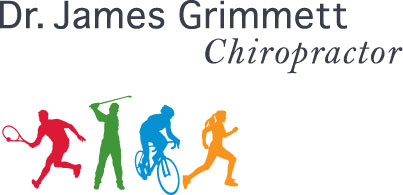The current situation of no court or gym access does not need to equate to inactivity. Quite the contrary in fact. One can look at the present time as an opportunity, at least for getting functionally stronger for badminton and squash.
Many racquets athletes lack off-season training to prepare for the upcoming season. That is, for the purpose to reduce the risk of injury and to ultimately enhance performance.
Take the situation of André Agassi when he retired too early. During his retirement while base training, which included yoga, he realized his performance was improving. So much so that he returned to the professional tennis circuit with his regained speed and corresponding court performance. Even Agassi did not appreciate the negative effects of his imbalanced regular season tennis training.
Racquet sports being one-sided create muscle imbalances. If not addressed with off-court corrective exercises postural faults are likely to take hold. If this continues performance drops and the ensuing risk for injury increases.
So why not seize the moment as an opportunistic one to address those imbalances and be in better court shape when the courts reopen. The goal of the off-season training is to strengthen your weak links to create better muscle balance. This improved functional strength will be expressed in quicker foot speed and a more powerful smash or drive.
Keep a couple of principles in mind and you are well on your way to doing the exercises correctly to reap the benefits. Maintain good/tall posture and work both sides of your body equally. As simple as these two principles are don’t underestimate the mental focus to accomplish this.
Your training area need not be more than enough floor space to comfortably lie down. Even better include a nearby park ideally with a hill or stairs. For the exercises themselves there are many possibilities that you can use to create your own well tailored program.
What is to follow are some suggestions. Before starting keep in mind the idea of being tall and light on your feet. And, if you experience pain stop the exercise. Pain is usually due to poor technique and or an underlying injury that should be addressed. The program you create should be challenging and make you sweat but not painful.
I like mimicking aspects of the game such as the lunge, sideways movement, and jumps. If you have enough space you can use your racquet and include shadow foot work.
To put this into practice ensure you have a square or rectangular space big enough to take 2-3 steps to reach the corner with a lunge. There are numerous foot work exercises you can do in this space – your home mini court. For example, do quick steps to one corner and return to the middle before continuing in a clockwise direction. After 2 – 5 complete circles then change to counter-clockwise. Once finished with the right leg for lunging then do another set now with the left leg for the lunge. As mentioned you want to work both sides equally.
Should you feel you are weak in coming to the front for a shot you can include ‘v’ front court foot drills. In this exercise you use the front court only of your mini court and alternate running front forehand and backhand always returning to the middle court between shots.
Straight forward and backward footwork as well as side-to-side footwork can be included. For the more adventurous jump overhead shots can be added to the footwork in the back court.
One of the beauties of this off court training is that correct technique is more likely to be executed. While court running all the while the focus is on keeping upright /tall and light on your feet. For a good visual example think of the fencer’s posture in the lunge.
All ages can benefit from an off-season strengthening program to better return to the sport. The 20 year old national level athlete will definitely be more explosive with jumping included than the 80 year old athlete where footwork is an easy jog like speed or fast walk.
Sideways movement is usually the weakest movement pattern and thus the most important to include. You need to have strong sideways movement to move fast forward and backwards. It is also a pattern that when weak increases the risk of many repetitive injuries such as knee injuries, shin splints, plantar fasciitis,…
Sideways exercises can include 2-3 steps to one side and then the other. Jumps to the side back and forth like a skier and 1/4 or 1/2 turn jumps back and forth are good too.
Speed work can include running on the spot, skipping, and sprinter-like (see photos) knee raises. In this exercise the legs move like pistons with the back/torso held stable. It’s a stable back that aids the hips and shoulders to be explosive for locomotion. To remember good form think of Usain Bolt.
Floor exercises are also an integral part of a functional exercise program. Rolling, crawling, and side planks can and should be included. Side planks done properly are demanding and require a good level of functional strength. Given the challenging nature of the plank only include these if you have a good understanding of them.
Training outdoors is my preference. QE Park behind the VRC with it’s notorious hill makes it easy to add some speed and power into your workout.
The classic sprint or walk up the hill is hard to beat. Any way you make to the top you are likely to break a sweat. This is a great opportunity to focus on good form as typically posture falters as we tire. Keeping good posture – head up , arms swinging with hands open, and being light on your feet – should be the focus when getting up the hill.
Enjoy!
